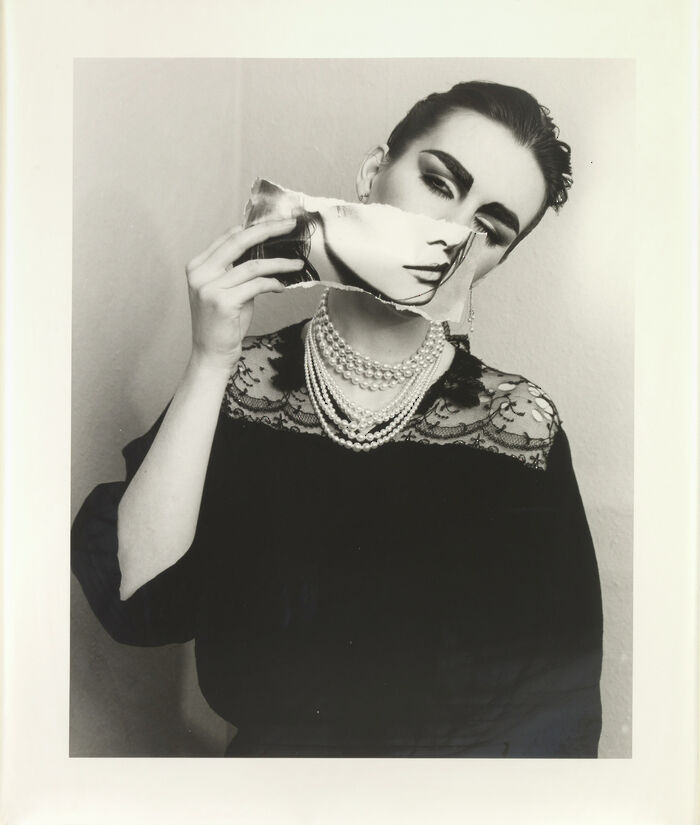Richard Pousette-Dart: Beginnings exhibition review
Untangling the work of one of the great artists of the New York School of abstract expressionism, Isobel Bickersteth gives us a glimpse into this exciting new exhibition at Kettle’s Yard

Until now, Richard Pousette-Dart has never been the subject of a major solo exhibition in the UK. This seems surprising: he was a key figure of Abstract Expressionism, the art movement which radically transformed post-war American art, as well as being at the forefront of the New York School. With this in mind, Richard Pousette-Dart: Beginnings, is an exciting opportunity to view a selection of his early work in a carefully curated space.
"Intense, strikingly evocative photography lines the walls"
The variety in medium and style of his work is impressive. Sculpture, photography and painting can all be found in the exhibition, which focuses on the formative stages of the artist’s career. The exhibition plots Pousette-Dart’s progression from a sculptor to an artist who became “taken with painting which drinks me up”; the diversity in his practice rendered through the galleries juxtaposition of his different artistic mediums. Upstairs lies another surprise: intense, strikingly evocative, photography lines the walls of the Edlis Neeson research space. Portraits of his contemporaries, Mark Rothko, Barnett Newman and William Congdon, as well as art dealer Betty Parsons, serving as a reminder of how far he was embedded into the New York art scene.

The exhibition allows us to appreciate Pousette-Dart’s constant experimentation. It’s hard not to be impressed with the unrelenting developments of his work, sharply realised by the remarkably different nature of each room. Art is conceived as a continual, ever changing process: “I am passionately in love with… creative energy”, he explained in a letter to Jim Ede. The consequences of this “creative energy” make for an engaging exhibition, visitors constantly confronted with something new. This variety manifests itself beyond the medium of art, with a range of styles explored within the different art forms. Take, for example, his sculpture which encompasses stone works, brass symbols and later experimentation with twisting wire sculptures.
His painting shares a similar inclination for evolution. Geometric forms of Cubism lie alongside Native American inspired depictions of nature, which display graphic outlines of animal forms. Later changes in technique see a focus on gestural art, layering and matter. This is embodied in Crucifixion, Comprehension of the Atom, in which Pousette-Dart responds to the anxiety of war with a vibrant and eclectic mix of colours surrounding a cross, which emerges from a background of darkness.
"Pousette-Dart responds to the anxiety of war with a vibrant and eclectic mix of colours surrounding a cross"
Running throughout his work is an interest in symbols. This is realised in full in the second room, which focuses on his interest in the symbolism of the circle - particularly in his work from the 1950s. His proclamation that circles are “all or nothing/ they are living signs of flowers or spirit/ they are signs of heaven/ rising and falling suns and moons/ the centre of the earth and universe/ God’s eye” is adorned across one wall: “they tremble in my transcendental landscape”. This “tremble” echoes most vividly in the large-scale paintings which fill the space, huge canvases centred around etchings of circles. Monumental in size, and mesmerising to view, their surface detail is equally fascinating. Pousette-Dart builds a textured and layered surface. Square of Meditation #2 exemplifies this, its paint applied so heavily the surface appears almost sculpture like in quality.

This preoccupation with symbols is closely intertwined with his interest in spirituality. “I strive to express the spiritual nature of the universe”, says one of his writings displayed as part of the exhibit, “painting...is mysterious and transcending, yet solid and real”. Although he personally ascribed to no particular religious belief, he took an interest in both Eastern and Western spiritual teachings, which echoes in the symbols used throughout his work. It is also rendered in his technique of layering canvases, often altering works multiple times - revealing and concealing the multiplicity of being.
Interspersed throughout the exhibition are excerpts of his writings, letters and postcards which enable visitors to explore his inspiration. Through these, his friendship with Jim Ede, the founder of Kettle’s Yard, is brought to light - the two maintained a long lasting written correspondence since meeting in New York in 1940. This connection to Cambridge localises the exhibition, with a set of brass rings belonging to the Kettle’s Yard collection helping show the link between his early sculpture and later large scale work through their shared preoccupation with circles. The galleries use of iPads builds further upon this map of influences: highlighting his sonic influences, playing an extract from Brahms Symphony No. 1. Included upon the iPad is a recording from a lecture delivered at the Skowhegan School of Painting and Sculpture, which points to his influence as a teacher (students including Ai WeiWei and Christopher Wool).
Energy radiates throughout this exhibition. Regardless of the style, or medium, of his work, Pousette-Dart’s attempt to depict his “transcendental landscape” remains constant throughout the exhibit. The creative expression, and innovation, utilised in doing so is striking - resulting in a riveting exploration of artistic experimentation.
 Comment / Cambridge’s tourism risks commodifying students18 April 2025
Comment / Cambridge’s tourism risks commodifying students18 April 2025 News / Varsity ChatGPT survey17 April 2025
News / Varsity ChatGPT survey17 April 2025 News / Cambridge researchers build tool to predict cancer treatment success19 April 2025
News / Cambridge researchers build tool to predict cancer treatment success19 April 2025 News / Cambridge researchers find ‘strongest evidence yet’ of life on distant exoplanet18 April 2025
News / Cambridge researchers find ‘strongest evidence yet’ of life on distant exoplanet18 April 2025 News / Greenwich House occupiers miss deadline to respond to University legal action15 April 2025
News / Greenwich House occupiers miss deadline to respond to University legal action15 April 2025






